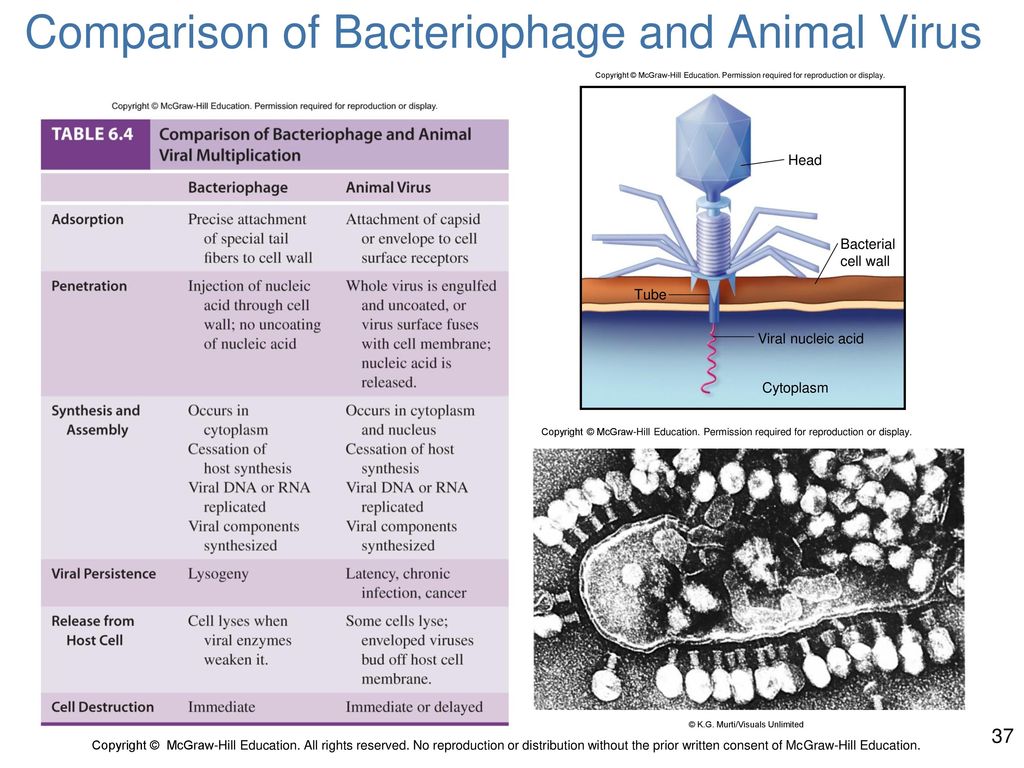Bacteriophage Go Through Similar Stages as Animal Viruses Except
These small containers house a genome. Bacteriophage go through similar stages as animal viruses except.

The Viral Life Cycle Microbiology
Bacteriophage range in size from a few tens of nanometers to several hundred nanometers Baker et al 1999.

. The actions of the virus depend both on its destructive tendencies toward a specific host cell and on environmental conditions. The cell on the right is a typical animal virus and has a much simpler structure. The nucleic acid of bacteriophages enters the host cell naked leaving the capsid outside the cell.
Viruses may enter a host cell either with or without the viral capsid. 00002417 So bacteriophages are viruses that infect bacterial hosts. Reads similar to animal viruses were distributed into 33 genera 13 of which are known to infect humans and cause diseases of varying severity.
Some phages can only reproduce via a lytic lifecycle in. The bacteriophage attaches itself on the surface of bacteria. Viruses generally come in two forms.
After binding to host receptors animal viruses enter through endocytosis engulfment by the host cell or through membrane fusion viral envelope with the host cell membrane. Transduction happens through either the lytic cycle or the lysogenic cycle. In the Lytic Cycle a bacteriophage infects a bacteria and kills it to release progeny virus.
Lytic animal viruses go through the following stages to replicate. The replication cycle of all viruses involves three key phases. For example Ebola virus spreads from contact with infected blood feces or vomit.
Unlike many other viruses scientists. Other viruses spread most easily through contact with other bodily fluids. 00003021 So just as we and many of our animal cousins are infected by viruses that are specific for us 00003929 bacteria also have viruses that infect them and they are.
In the vegetative cycle of viral infection multiplication of progeny viruses can be. The new phage particles are then released by lysis of the host. Life Cycle of Viruses with Animal Hosts.
All of the following are characteristics of viruses except. Viruses are typically described as obligate intracellular parasites acellular infectious agents that require the presence of a host cell in order to multiplyViruses that have been found to infect all types of cells humans animals plants bacteria yeast archaea protozoasome scientists even claim they have found a virus that infects other viruses. The capsids of most are regular icosahedral structures a few tens of nanometers in size.
Bacteriophage go through similar stages as animal viruses except Multiple Choice adsorption. The animation above shows how a virus reproduces. The event that occurs in bacteriophage multiplication that does not occur in animal virus replication is.
Plant and animal viruses can enter through endocytosis as you may recall the cell membrane surrounds and engulfs the entire virus. However bacteriophages viruses that infect bacteria have a unique shape with a geometric head and filamentous tail fibers. The process beginning with entry of the virus into the host cell to the release of progeny viruses is referred to as the replication cycle.
7 rows Comparison of Multiplication Cycles of Bacteriophage and Animal Viruses. Bacteriophage exhibits two major types of life cycles. Attachment penetration uncoating biosynthesis maturation and release see Figure 57.
Attachment penetration biosynthesis maturation and release see Figure 610. However the mechanisms of penetration nucleic-acid biosynthesis and release differ between bacterial and animal viruses. A bacteriophage is a type of virus that infects bacteria.
The steps that make up the infection process are collectively called the lifecycle of the phage. Viruses can reproduce only within a host cell. When bacteriophages viruses that infect bacteria that are lytic infect bacterial cells they harness the replicational transcriptional and translation machinery of the host bacterial cell to make new viral particles.
In fact the word bacteriophage literally means bacteria eater because bacteriophages destroy their host cells. A bacteriophages is going to through similar stages of multiplication as an animal cell except once binding has occurred uncoating stage doesnt happen because of filaments and penetration step injects the Nucleic acid directly into the cells cytoplasm. Viruses are so small that they are best viewed using an electron microscope which is how they were first visualized in the 1940s.
This cycle takes place in the following steps. Bacteriophages influence the human microbiome and physiology by altering an organisms microbiome Navarro and Muniesa 2017 with potential impacts on the astronauts health. 3 Fill in the blank Sipood Aln Is the protein shell around the nucleic acid core of a virus.
Lytic Cycle or Virulent Cycle. The parental virus virion gives rise to numerous progeny usually genetically and structurally identical to the parent virus. Bacteriophages have complex tails which are used to attach to and inject DNA or RNA into the host cell.
First the virus attaches to receptors on the host cell using its envelope proteins. 8 Introduction to Viruses. Lytic animal viruses follow similar infection stages to bacteriophages.
6 Fill in the blank Skipped. Bacteriophages just like other viruses must infect a host cell in order to reproduce. Bacteriophage go through similar stages as animal viruses except 13 Multiple Choice Skipped adsorption release synthesis attachment When HIV is transmitted is the enzyme responsible for transcribing RNA Into DNA.
Table 1 gives an idea of the typical sizes of bacteriophage as well as some animal viruses for comparison. Lysogenic Cycle or Temperate Cycle. Initiation of infection genome replication and expression and finally egress or release of mature virions from the infected cell.

Chapter 6 An Introduction To Viruses Ppt Download


No comments for "Bacteriophage Go Through Similar Stages as Animal Viruses Except"
Post a Comment